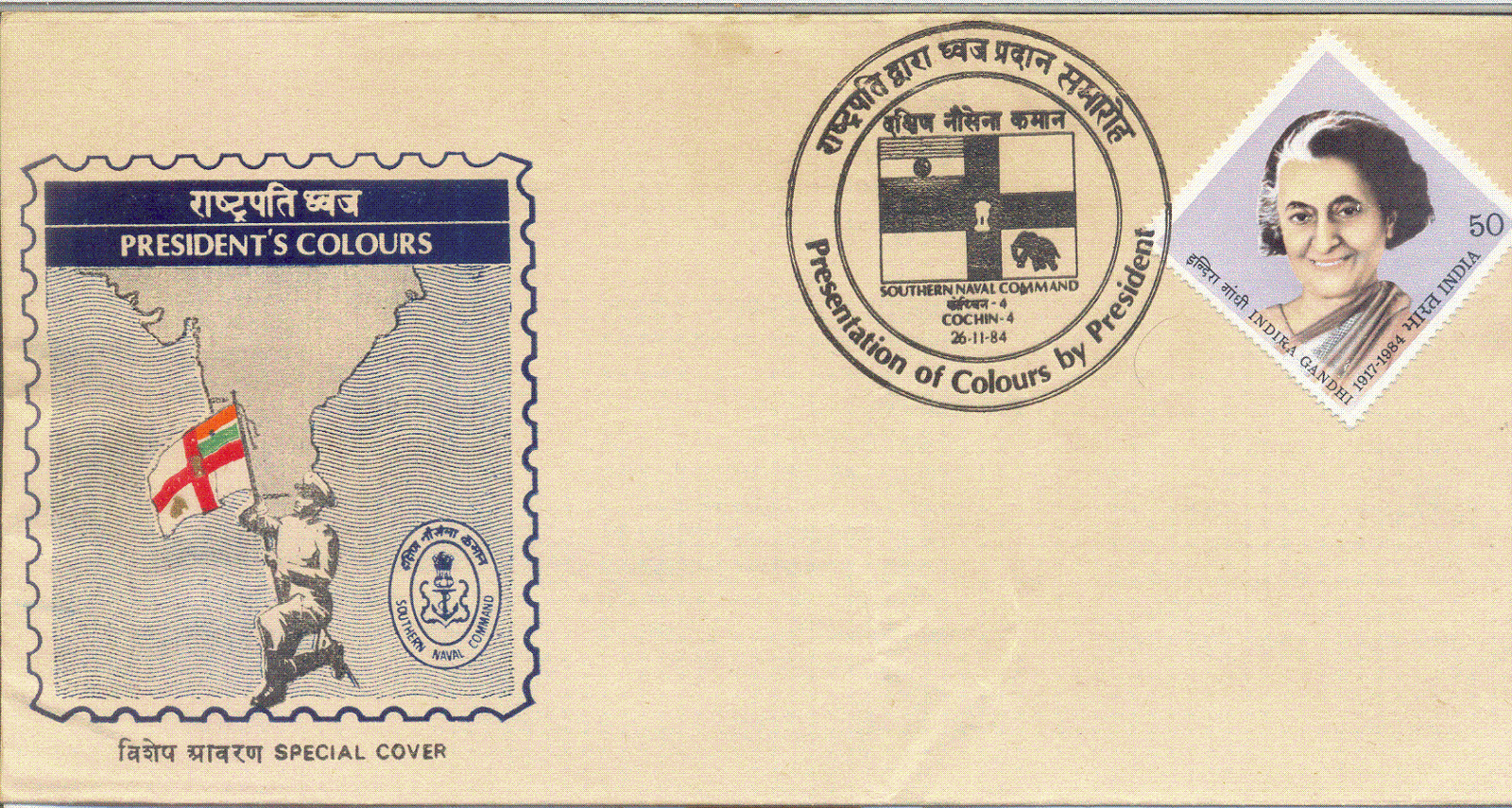The President of India Gyani Zail Singh presented
Colours to the Southern Naval Command on 26th November 1984. This
Cover was issued and postmarked at Cochin on that ceremonial occasion.
A few excerpts from the
pamphlet issued along with the Special Cover are given below:-
Significance: Colours
given to a fighting unit has the same significance as a national flag has to a
nation. Down the ages, Colours have served as a rallying point in battle and a
source of strength and inspiration for the men in times of stress. During the
pre-independence period, the King's Colours were used by the Indian Armed
Forces. All these Colours were laid to rest formally at the Indian Military
Academy, Dehradun in 1950. Subsequently, on
May 27, 1951, the Indian Navy was awarded the President's Colours - the first
of the three services to be so honoured. On November 26, 1984, Southern Naval Command became the first
Naval Command presented with President's Colours.
Area of Responsibility of the Command: The
maritime jurisdiction of the Southern Naval Command covers the area from Goa to
Kanyakumari including the Gulf of Mannar between Indian and Srilanka, extending
into the Arabian Sea in a south-westerly direction down to 5 degree South
latitude in the Indian Ocean. The Flag Officer Commanding-in-Chief, Southern
Naval Command, with his Headquarters at Cochin, exercises his operational
control over this area through the Flag Officer Commanding, Goa Area and the
Naval Officers-in-charge, Cochin, Lakshadweep, Tuticorin, Mangalore, and
Karwar.
The President's Colours: The
presentation of Colours by the President indicates the symbolic recognition of
the Southern Naval Command. The colour being presented is a naval ensign, white
in colour and marked with the red St. George's cross. It has a national flag in
the upper canton, Ashoka Lion - the emblem of India in the center and a
gold-embroidered elephant in the lower fly. The elephant symbolizes
"Strength and Stability."

No comments:
Post a Comment